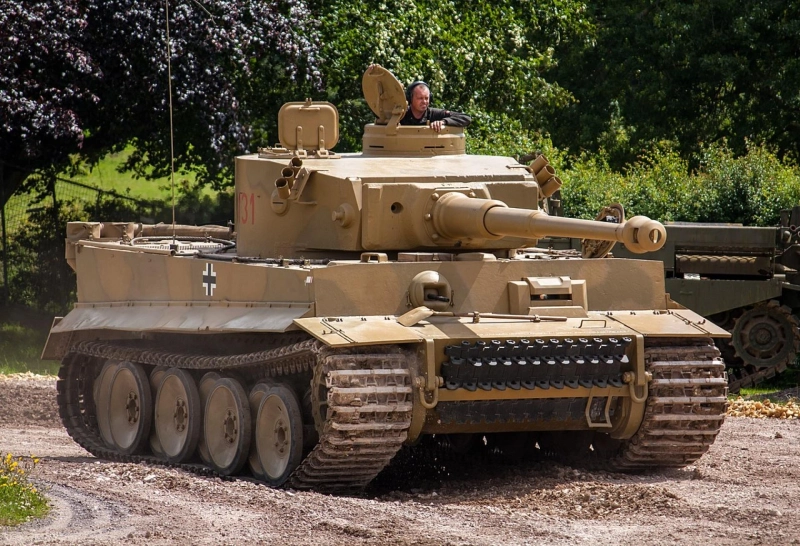World War II witnessed a plethora of technological advancements in military equipment, and one of the most iconic and feared vehicles to emerge from this era was the German Tiger tank. A symbol of German engineering prowess and battlefield dominance, the Tiger tank played a crucial role on the Eastern and Western fronts. In this article, we will delve into the history, design, capabilities, and impact of the German tanks WW2 Tiger, with a particular focus on the legendary Tiger tank.
The Evolution of German Tank Warfare
Before delving into the specifics of the Tiger tank, it's important to understand the context of German tank warfare during World War II. In the early years of the war, German tanks like the Panzer I, II, and III were effective against their opponents. However, as the conflict progressed, the limitations of these tanks became evident, especially when facing more advanced and heavily armored adversaries.
This realization prompted the German military to develop a new generation of tanks that would possess superior firepower, protection, and mobility. This quest for technological superiority gave birth to the fearsome Tiger tank.
Birth of the Tiger
The Tiger tank, formally known as the Panzerkampfwagen VI Tiger Ausf. E, was conceived as a response to the growing need for a heavily armored and powerful tank that could engage enemy tanks at long ranges. Designed by Henschel & Son, the Tiger was a formidable behemoth, weighing around 57 tons and featuring thick sloped armor that provided excellent protection against enemy fire.
The Tiger tank boasted an impressive array of technical specifications and capabilities:
Armor: The Tiger's armor was a key feature, ranging from 25mm to 120mm in thickness. Its sloped armor design not only enhanced protection but also deflected incoming projectiles, significantly increasing the tank's survivability.
Firepower: Equipped with an 88mm KwK 36 L/56 main gun, the Tiger had exceptional firepower. This high-velocity gun could penetrate enemy armor at extended ranges, giving the Tiger a distinct advantage in head-to-head engagements.
Mobility: Despite its weight, the Tiger had a surprisingly effective power-to-weight ratio, allowing it to reach speeds of up to 24 mph on roads. This mobility, combined with its robust suspension system, made it relatively agile for its size.
Impact on the Battlefield
The Tiger tank had a profound impact on the battlefield, shaping the course of key engagements during World War II:
Eastern Front: On the Eastern Front, the Tiger tank played a crucial role in the Battle of Kursk in 1943. Its potent firepower and thick armor allowed it to engage and destroy Soviet tanks with relative ease, becoming a feared adversary among the Red Army.
Western Front: During the Normandy campaign in 1944, the Tiger tank demonstrated its effectiveness against Allied forces. Its ability to knock out Sherman tanks from great distances often left Allied tank crews at a significant disadvantage.
Psychological Warfare: The Tiger tank's reputation extended beyond its physical capabilities. The mere presence of a Tiger on the battlefield could demoralize enemy troops and create panic, leading to tactical advantages for the German forces.
Challenges and Limitations
While the Tiger tank was a marvel of engineering, it wasn't without its challenges and limitations:
Production Costs: The complexity of the Tiger's design and its high-quality materials made it expensive and time-consuming to produce. This limited its availability on the battlefield.
Logistical Burden: The Tiger's weight posed challenges in terms of transportation and maintenance. Its mechanical reliability sometimes suffered under the strain of constant use and the demanding conditions of warfare.
Vulnerability: Despite its formidable armor, the Tiger was not invincible. Skilled tank crews and innovative tactics, such as flanking maneuvers, could still overcome its defenses.
Legacy and Influence
The Tiger tank left an indelible mark on the history of armored warfare. Its design principles and technological innovations influenced the development of post-war tank designs. The knowledge gained from analyzing captured Tiger tanks also contributed to the evolution of tank tactics and strategies.
Conclusion
The German Tiger tank stands as an enduring testament to the ingenuity and engineering prowess of its time. A pinnacle of German tank design during World War II, the Tiger's combination of armor, firepower, and mobility set it apart from its contemporaries. While its impact on the outcome of the war may be debated, there's no denying that the Tiger tank's legacy continues to fascinate military historians and enthusiasts alike. In an era dominated by technological advancements and fierce competition, the Tiger tank remains an iconic symbol of German engineering excellence on the battlefield.


